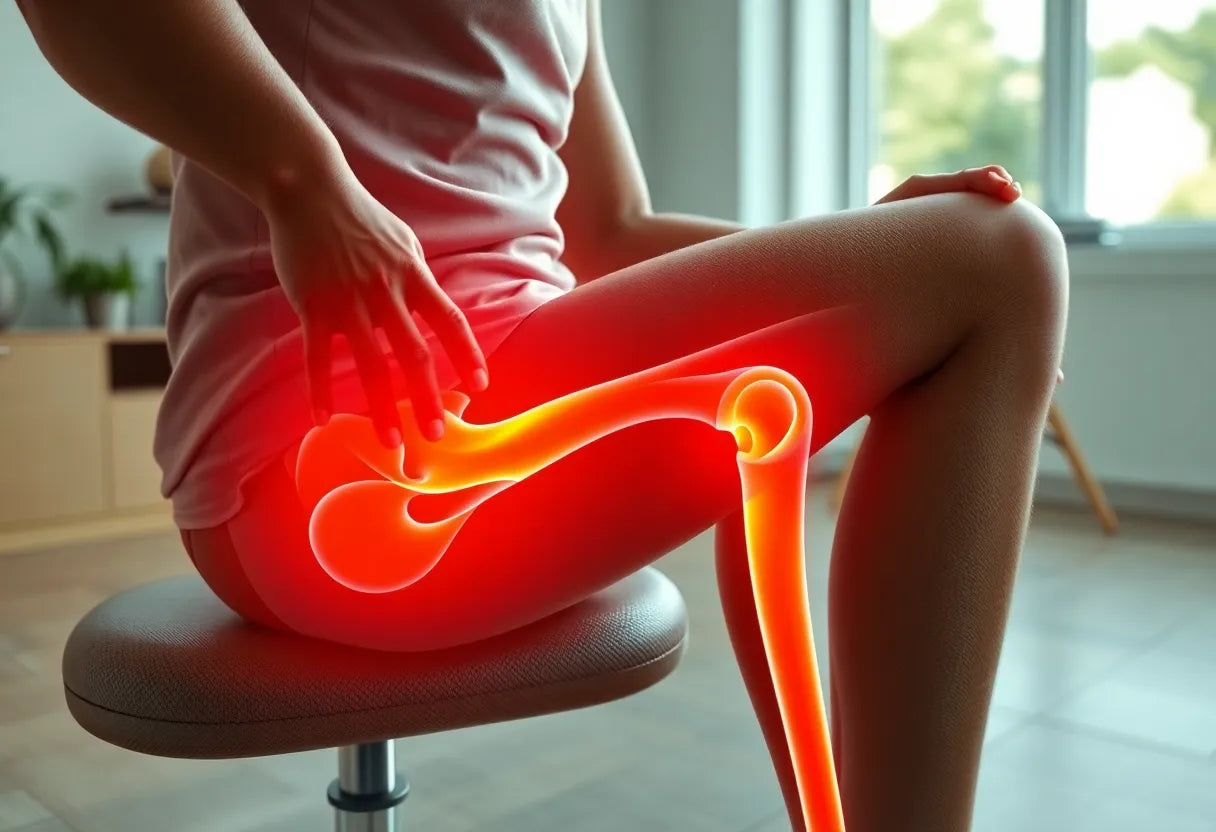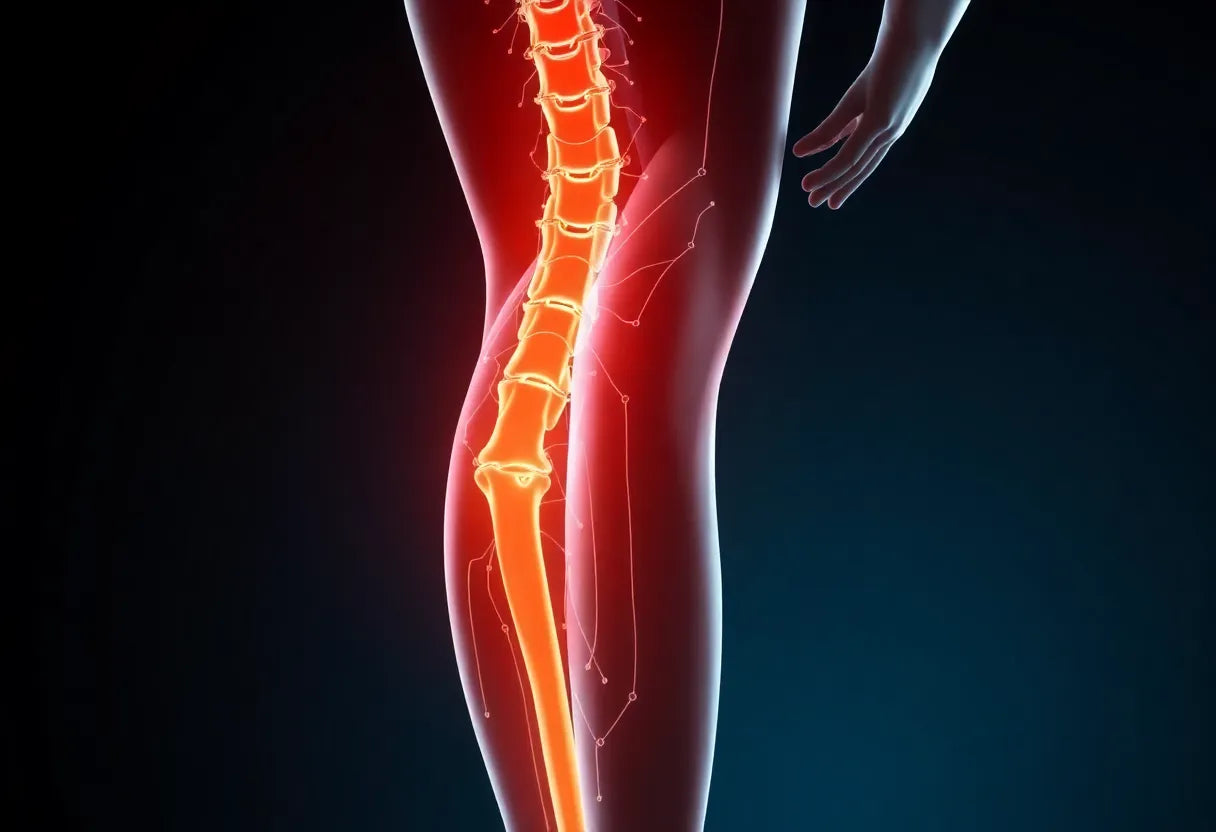Understanding the complexities of a herniated disc at the L5/S1 location is crucial for those experiencing discomfort in the lower back. A herniated disc occurs when the soft inner gel of the disc protrudes through its tougher exterior, often impacting nearby nerves. The L5/S1 disc is located in the lower lumbar region, where it connects the last lumbar vertebra to the sacrum. This specific location is a common site for herniation due to its role in supporting much of the body's weight and allowing for a range of movements.
When a disc herniates at L5/S1, it often leads to a range of symptoms. Many individuals experience lower back pain, leg pain, and in some cases, numbness or weakness in the legs. These symptoms arise primarily from compression of the nerve roots in the area, which can significantly affect one's quality of life. Understanding these symptoms is the first step in addressing the condition effectively.
the importance of exercise in managing symptoms
Exercise plays a pivotal role in managing and alleviating the symptoms associated with an L5/S1 herniated disc. Engaging in the right exercises can help reduce pain, improve mobility, and enhance overall spinal health. Importantly, exercises are not just a short-term solution for symptom relief; they contribute to long-term stability and strength of the spine, which can prevent further injury or deterioration.
Safe exercises are designed to target two main objectives: alleviating immediate symptoms and promoting long-term spinal health. By carefully selecting exercises that focus on strengthening the core, improving flexibility, and enhancing nerve mobility, individuals can experience significant relief. These exercises also help in stabilizing the spine, which is crucial for maintaining proper posture and reducing the risk of further injury.
what to expect from this post
This blog post aims to guide you through a series of safe exercises specifically tailored for those with an L5/S1 herniated disc. You will learn about effective exercises like the lumbar extension, nerve flossing techniques, and core strengthening routines that can aid in your recovery. Additionally, we will highlight exercises to avoid, ensuring you do not inadvertently worsen your condition. By the end of this post, you'll have a comprehensive understanding of how to manage your symptoms through exercise, empowering you to take control of your spinal health.
safe exercises for managing an L5/S1 herniated disc
Addressing a herniated disc at the L5/S1 level requires a strategic approach to exercise, focusing on pain relief and spinal stabilization. Implementing the right exercises can significantly improve your symptoms and overall quality of life. Let's delve into some effective exercises specifically designed for this condition.
lumbar extension (“cobra”)
The lumbar extension, commonly known as the "cobra" pose, is a beneficial exercise for individuals with an L5/S1 herniated disc. This exercise helps improve blood flow and mobility around the affected disc, making it particularly useful for those experiencing increased pain when bending forward.
To perform the lumbar extension safely, follow these steps:
- Begin by lying face down on a mat with your legs extended and feet together.
- Place your hands under your shoulders, palms flat on the mat.
- Gently push through your hands to lift your chest off the ground, keeping your pelvis in contact with the mat.
- Hold the position for a few seconds, then slowly lower back down.
- Repeat this movement 8-10 times, ensuring you do not strain your lower back.
nerve flossing/mobilization
Nerve flossing, or mobilization, is a technique aimed at gently mobilizing the sciatic nerve to reduce irritation and radiating pain. This exercise can be particularly effective in alleviating symptoms associated with nerve compression.
Here’s how to perform nerve flossing safely:
- Sit on a chair with your feet flat on the floor and your back straight.
- Extend one leg forward, keeping the heel on the ground, and flex your ankle so your toes point towards you.
- Simultaneously, tilt your head forward, bringing your chin to your chest.
- Hold for a moment, then return to the starting position.
- Repeat this process 10-15 times on each leg, ensuring smooth and controlled movements.
core and glute strengthening exercises
Strengthening the core and glute muscles is essential for stabilizing the spine and shifting stress away from the herniated disc. Exercises like bridges, planks, and bird-dogs are particularly beneficial.
bridges
- Lie on your back with your knees bent and feet flat on the floor, hip-width apart.
- Engage your core and glutes, then lift your hips towards the ceiling, forming a straight line from your shoulders to your knees.
- Hold for a few seconds before lowering back down.
- Perform 10-15 repetitions.
planks
- Start in a forearm plank position, with your elbows directly under your shoulders and your body in a straight line.
- Engage your core and hold the position for 20-30 seconds, gradually increasing the duration as your strength improves.
bird-dogs
- Begin on all fours with your hands under your shoulders and knees under your hips.
- Extend your right arm forward and your left leg back, keeping your body stable.
- Hold for a few seconds, then return to the starting position.
- Repeat on the opposite side, performing 10-12 repetitions per side.
gentle stretches for relief
Incorporating gentle stretches into your routine can help alleviate muscle tightness associated with an L5/S1 herniated disc. Focus on hamstring and single knee-to-chest stretches for effective relief.
hamstring stretch
- Lie on your back with one leg extended and the other bent.
- Lift the extended leg towards the ceiling, holding the back of your thigh for support.
- Gently pull the leg towards you until you feel a stretch in the back of your thigh.
- Hold for 20-30 seconds and switch legs.
single knee-to-chest stretch
- Lie on your back with your knees bent and feet flat on the floor.
- Bring one knee towards your chest, holding it with both hands.
- Hold for 20-30 seconds before switching to the other leg.
exercises to avoid with an L5/S1 herniated disc
While certain exercises are beneficial, others can exacerbate the condition by loading or flexing the spine. It's crucial to avoid movements such as sit-ups, crunches, forward bends, deadlifts, deep squats, and heavy leg presses. High-impact activities like running should also be avoided, as they can increase pain and provoke leg symptoms. Always stop any activity that exacerbates your pain or discomfort.
By incorporating these safe exercises into your routine and avoiding harmful movements, you can effectively manage your L5/S1 herniated disc symptoms and promote long-term spinal health.

Lumbar support belt
Support og stabilisering til lænden; ideel ved smerter, diskusprolaps og iskiassmerter.
integrating exercises into your daily routine
Incorporating safe exercises into your daily routine is essential for managing an L5/S1 herniated disc effectively. Consistency is key; regular practice not only alleviates immediate symptoms but also contributes to long-term spinal health. Start with a manageable schedule, such as dedicating 15-20 minutes each day to these exercises. As you become more comfortable, you can gradually increase the duration and intensity.
Listening to your body is crucial. Pay attention to how you feel during and after exercises, and make adjustments as needed. If you experience increased pain or discomfort, it may be necessary to modify your routine or consult a healthcare professional for guidance. Remember, the goal is to enhance your well-being, not to push through pain.
additional considerations for managing a herniated disc
While exercises play a significant role in managing a herniated disc, additional considerations can further support your recovery. Ergonomic aids, such as supportive chairs and posture supports, can complement your exercise routine by reducing strain on your spine. These tools can be particularly beneficial during activities like sitting at a desk or driving.

Men's Posture Shirt™ - Black
Støtter korrekt kropsholdning og kan lindre smerter samt spændinger i ryggen.
It's important to know when to seek professional guidance. If your symptoms worsen or you do not notice improvement after consistent exercise, consulting with a healthcare provider is advisable. They can offer personalized advice and may recommend physical therapy or other interventions to aid your recovery.
frequently asked questions
What are the best exercises for a herniated disc at L5/S1?
The best exercises for a herniated disc at L5/S1 include lumbar extensions, nerve flossing, core strengthening exercises like bridges and planks, and gentle stretches such as hamstring and knee-to-chest stretches.
How often should I do these exercises?
These exercises can generally be performed daily. However, it's essential to listen to your body and consult a healthcare professional for personalized advice, especially if you experience discomfort.
What should I do if an exercise increases my pain?
If an exercise increases your pain, stop immediately and consult with a healthcare provider to reassess your routine. It's crucial to avoid activities that exacerbate your symptoms.
Can these exercises fully heal a herniated disc?
While exercises can significantly alleviate symptoms and improve function, they may not fully "heal" the disc. They are an important part of a comprehensive management plan aimed at symptom relief and functional improvement.
Are there any other non-exercise treatments that can help?
Yes, non-exercise treatments such as physical therapy, ergonomic adjustments, and, in some cases, medical interventions may be recommended by healthcare professionals. These treatments can complement your exercise routine and support your recovery.
Källor
- NJ Spine & Orthopedic. "The Right and Wrong Exercises for Individuals with a Bulging Disc."
- Goodman Campbell Brain and Spine. "Lumbar L5/S1 Disc Herniation."
- National Center for Biotechnology Information. "Management of Lumbar Disc Herniation."
- South Shore Orthopedics. "Lumbar Disc Herniation."
- Medical News Today. "What to know about a herniated disk."
- Spine-health. "L5-S1 Treatment."
- ChoosePT. "Physical Therapy Guide to Herniated Disk."
- Neurospine. "Comprehensive Review of Lumbar Disc Herniation."


















